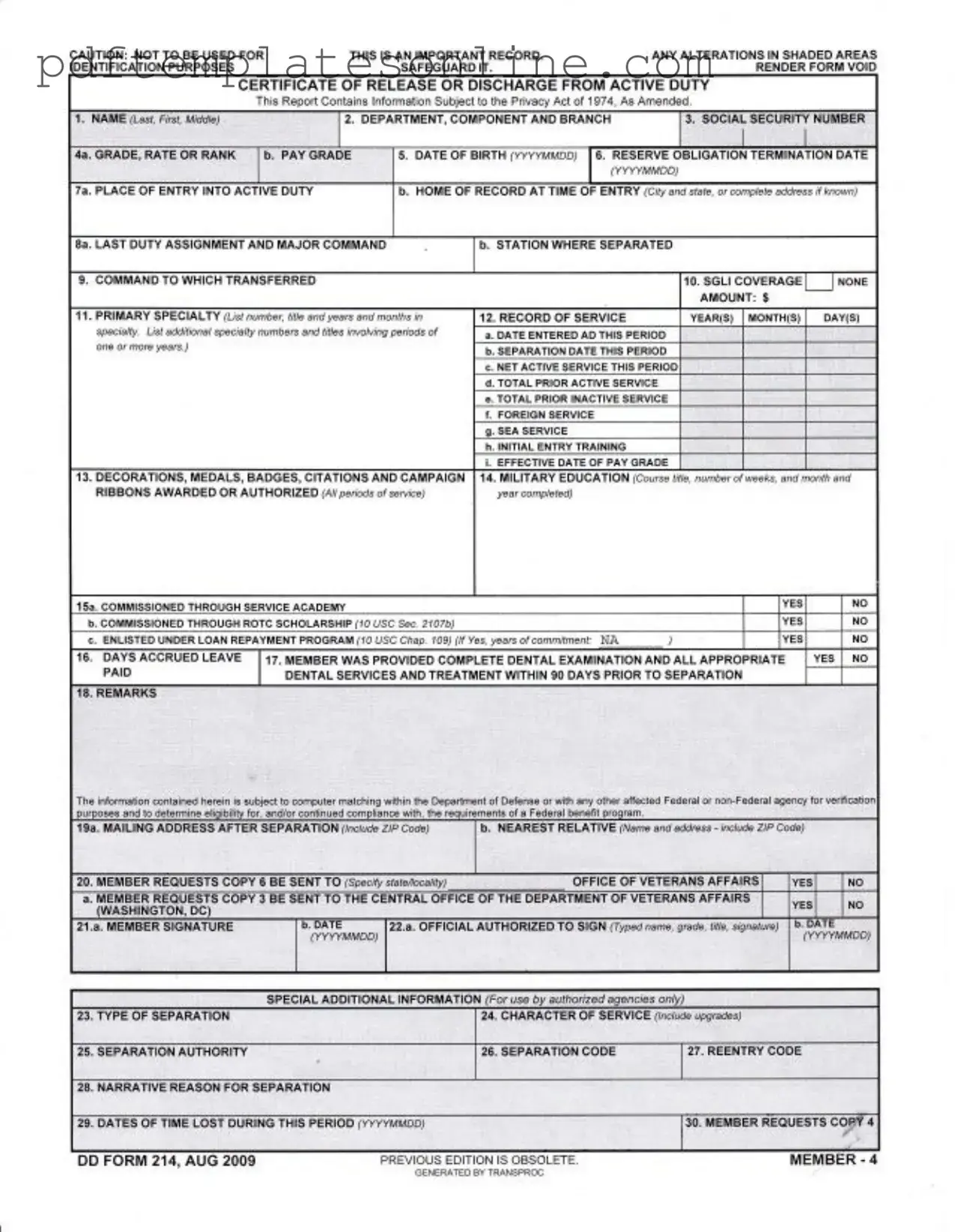Blank Dd 214 Form
The DD Form 214, officially known as the Certificate of Release or Discharge from Active Duty, is a vital document for veterans. It provides a comprehensive record of military service, including details such as rank, service dates, and awards. This form is essential for accessing benefits and services from the Department of Veterans Affairs.
Access Dd 214 Editor Now
